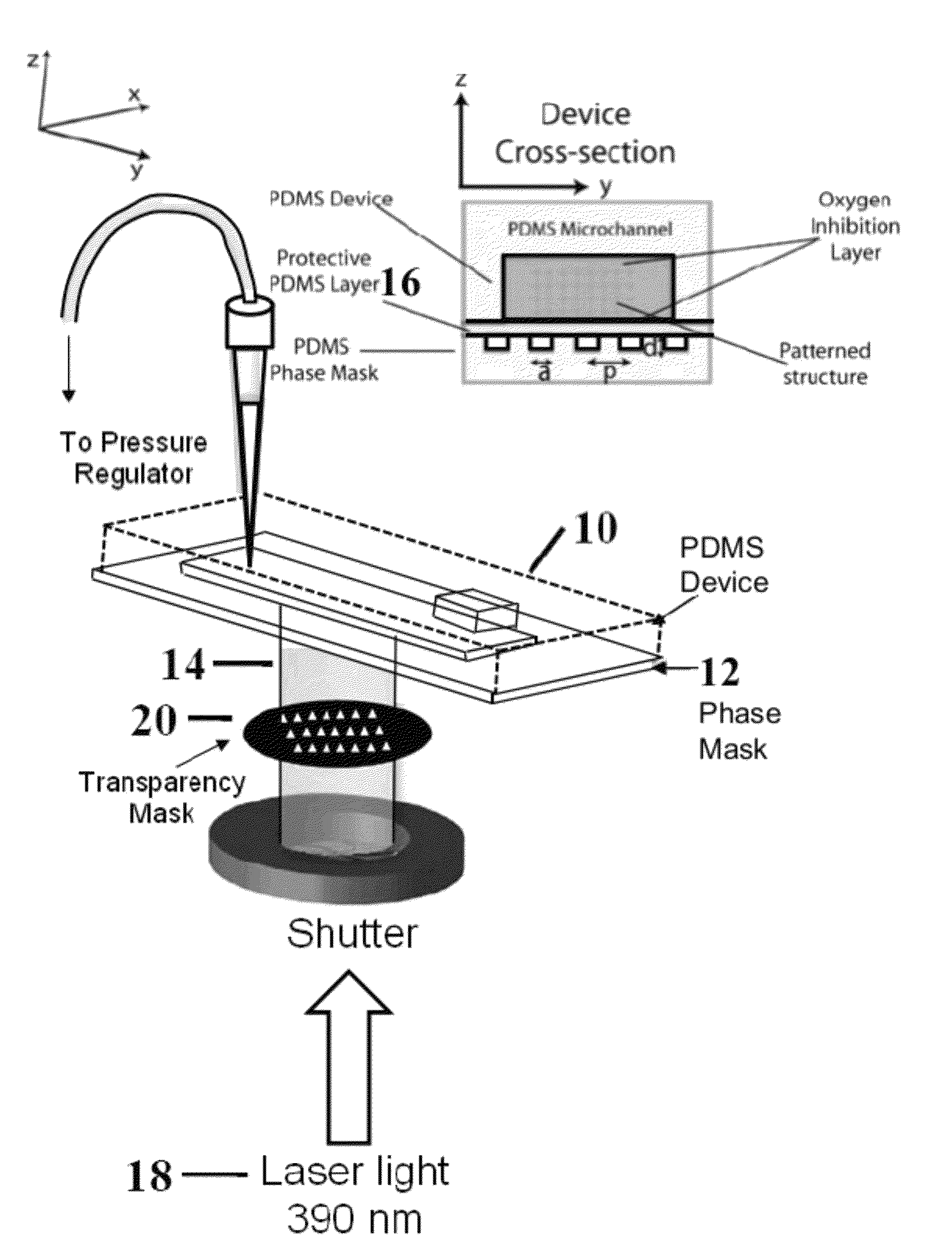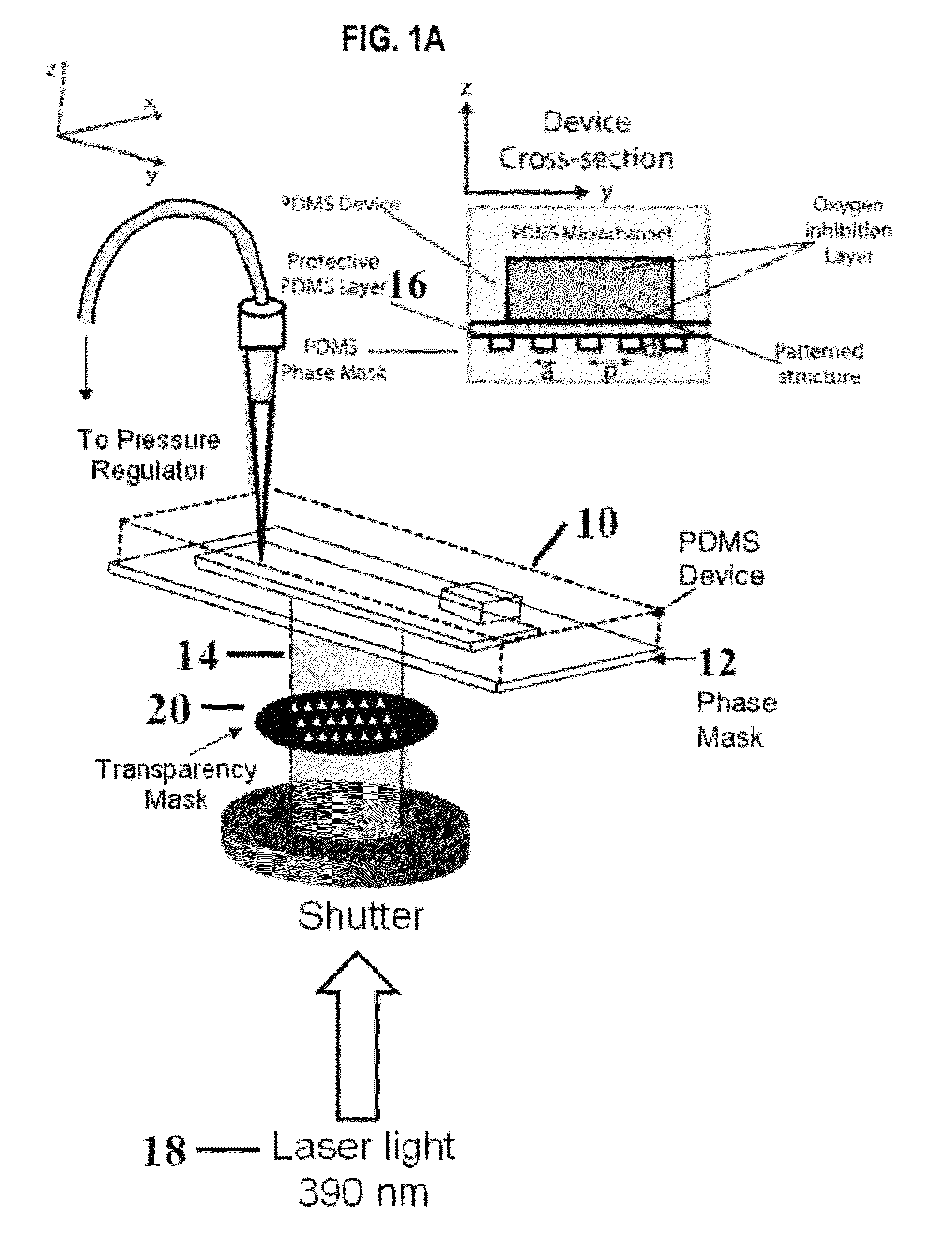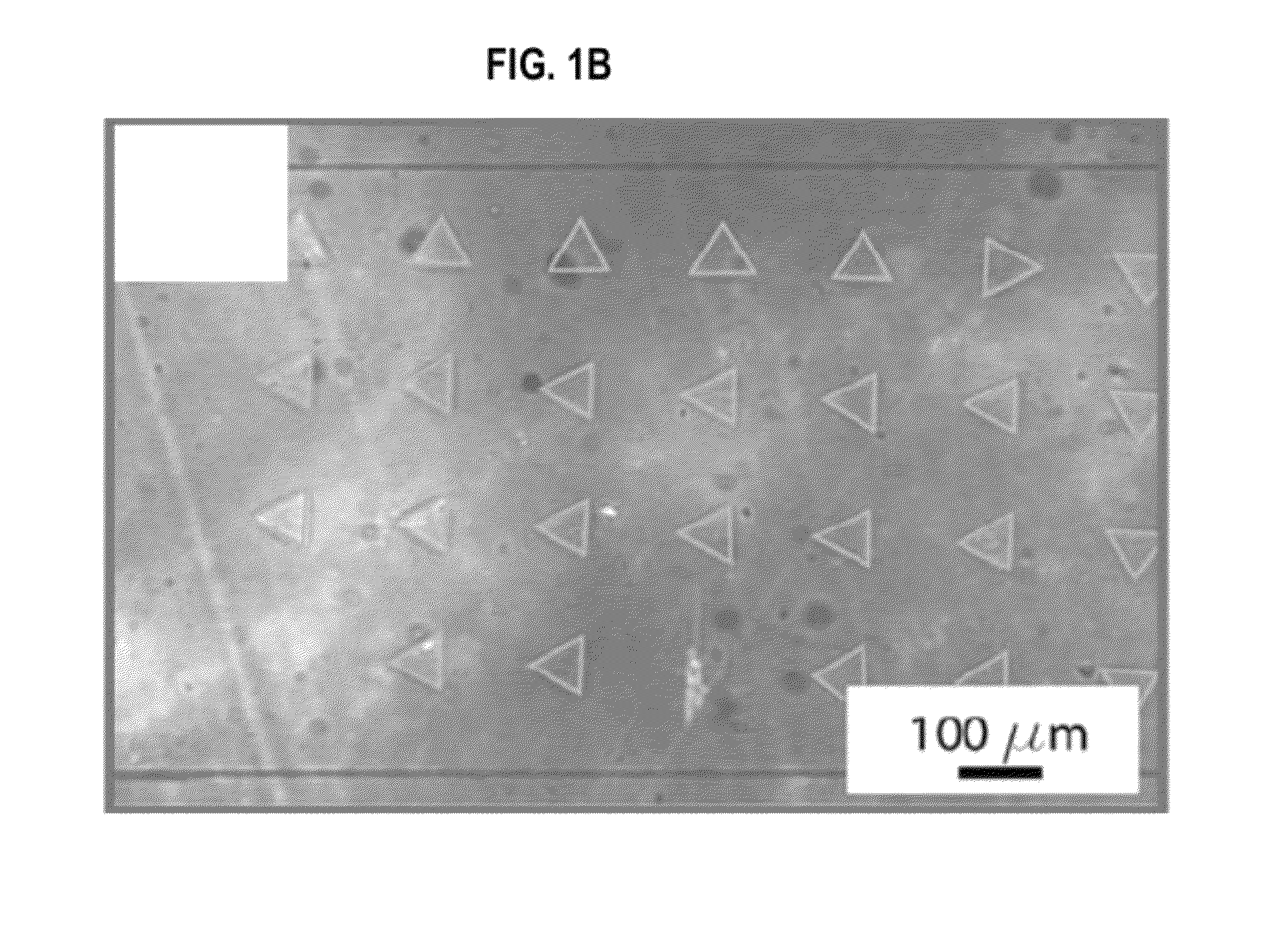Stop flow interference lithography system
a lithography system and flow interference technology, applied in the field of stop flow interference lithography system, can solve the problems of imposing restrictions on the shape and material properties of the structure formed, the type and geometry of the structure that can be formed, and the defects of the face, so as to achieve high throughput, improve throughput, and low viscosity
- Summary
- Abstract
- Description
- Claims
- Application Information
AI Technical Summary
Benefits of technology
Problems solved by technology
Method used
Image
Examples
Embodiment Construction
[0022]A schematic diagram of the setup used for SFIL is shown in FIG. 1. The microfluidic device 10 and a phase mask 12, both molded in PDMS, are sealed to each other as shown in the cross-sectional view in FIG. 1a. The passage of collimated light 14 through the phase mask 12 results in the generation of a complex 3-dimensional distribution of light intensity. This induces crosslinking of the oligomer only in the high intensity regions leading to the formation of a 3D structure. A protective, 3 μm thick, PDMS layer 16 is laminated (as by spin-coating) on top of the phase mask 12 in order to prevent the liquid oligomer from filling up the interstitial spaces in the phase mask 12 that provide the refractive index difference required when light traverses through the phase mask. We have used microfluidic devices with a lateral dimension of 1-5 mm to synthesize both millimeter-sized structures as well as arrays of micron-sized particles. The integrated device is placed on a microscope st...
PUM
| Property | Measurement | Unit |
|---|---|---|
| thick | aaaaa | aaaaa |
| thickness | aaaaa | aaaaa |
| thickness | aaaaa | aaaaa |
Abstract
Description
Claims
Application Information
 Login to View More
Login to View More - R&D
- Intellectual Property
- Life Sciences
- Materials
- Tech Scout
- Unparalleled Data Quality
- Higher Quality Content
- 60% Fewer Hallucinations
Browse by: Latest US Patents, China's latest patents, Technical Efficacy Thesaurus, Application Domain, Technology Topic, Popular Technical Reports.
© 2025 PatSnap. All rights reserved.Legal|Privacy policy|Modern Slavery Act Transparency Statement|Sitemap|About US| Contact US: help@patsnap.com



